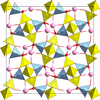issue contents
Advances in electron diffraction for structural characterization
Edited by Glenn Yap, Eric Reinheimer, Joe Ferrara, Laura Samperisi and Gunther Steinfeld
The use of electron diffraction (ED) as an alternative to traditional X-ray diffraction has gained traction in the last several years especially in the advent of electron beam diffractometers being developed. This collection will highlight recent advances in the technique and attempt to lay groundwork in establishing crystallographically sound standards and best practices for data collection and structural interpretation.

invited articles



 access
access

 access
access access
access

 access
access



 access
access

 access
access

Crystal structure of submicron-sized sulfur particles using 3D ED obtained in atmospheric conditions


 access
access
 journal menu
journal menu
























